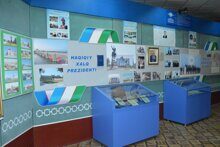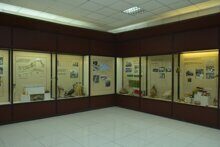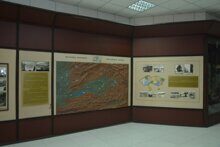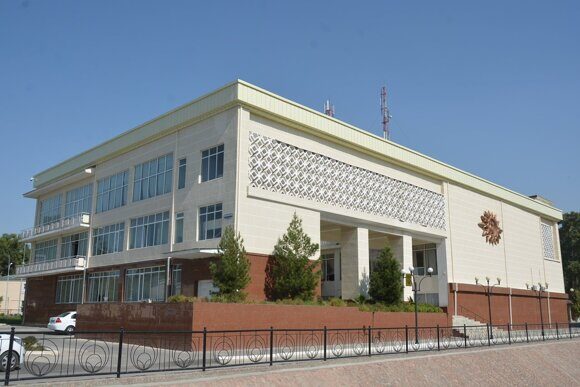
This museum is one of the oldest museums in Uzbekistan. The main event for it was the exhibition of agriculture and industry, held in the fall of 1984 in the city of New Margilan (present-day Fergana). A year later, on November 2, 1885, by order of the Fergana regional military governor, 4 rooms were allocated for the museum on the 2nd floor of the governor’s house.
If the Charter of the museum was approved in 1897, then on May 26, 1899, the grand opening of the "People's Museum of the Ferghana region" (the original name of the museum) took place. By this time, 2,223 objects and books had been collected in the museum. The museum was located in the back room of the governor's house and was usually open on weekends and holidays. Or it was specially opened for distinguished guests.
In 1911, the museum had to close and only in 1920, due to a change in the political situation in Ferghana, after the transfer of power of the council, the museum reopened. By this time, his goals and objectives have completely changed. The museum became known as the "scientific Museum of the city of Ferghana". It was placed in one of the buildings on Konstantinovskaya Street (present-day Turon). Until 1984, the museum operated in this building.
In 1922-1927, the museum's exposition included departments of agriculture, handicrafts, numismatics, nature, history and ethnography.
In 1928, a new department of archaeology was opened, and in 1932, the Department of Revolution. Since 1938, the museum has been operating as a "regional museum of local lore". By this time, the museum has expositions of natural history and history and socialist construction. The number of exhibits exceeded 15 thousand.
During the Second World War, the museum strengthened its activities, its staff enriched the collections with documents about front-line courage and selfless labor in the rear of Ferghana residents.
Since 1950, the museum has been active in the field of archaeology. These works were carried out by graduates of Leningrad University, and subsequently by museum employees N.G. Gorbunova and B.Z. Hamburg. Only in 1951-1956. The museum's funds are replenished with more than 3,000 archaeological objects. Although, at the time of the opening of the museum there were only 2 archeological objects. Today, the museum's archeology fund has one of the richest collections in the Fergana Valley. These are Stone Age tools, clay and bronze objects found as a result of archaeological research, as well as many objects discovered in the valley.
The majority of the museum's fund consists of negatives, photographs and documents reflecting the life of the inhabitants of the Fergana Valley from the second half of the 19th century to the present day, as well as objects of material heritage related to the ancient and modern history of the region.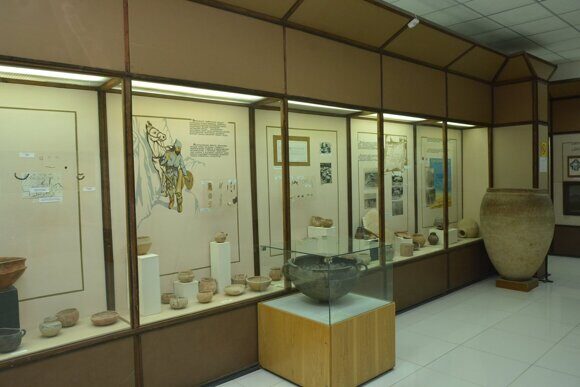
The museum also houses a collection of fine arts, uniting works of both the very first professional artists of Fergana M. N. Yantsin, P. M. Nikiforov, A. N. Volkov, S. Alibekov, and modern artists. Ceramics from Rishtan and Gurumsaray, copper and jewelry, a collection of textiles, as well as various embroidery patterns attract the attention of visitors.
Since 1985, the museum has operated in a new, modern, purpose-built building. At the moment, the museum has an exhibition reflecting the history of the valley until the beginning of the 20th century and showing the nature of the region. These displays are original heritage of our history and culture and use modern dioramas.
During the years of independence, the role of the museum in the social life of the region increased sharply. The role of qualified museum personnel in the restoration and research of the rich and unique history of our people is especially invaluable. It is thanks to these efforts that it is possible to celebrate significant dates not only at the national level, but also at the international level. The celebration of the 1200th anniversary of our great compatriot Ahmad al-Fergani and the 900th anniversary of Burkhoniddin al-Margiloni are a clear example of this.
In particular, the Decree of the President of the Republic of Uzbekistan I.A.Karimov dated January 12, 1998 No. 1913 "On improving and improving the activities of museums" and the decision of the Cabinet of Ministers dated March 5, 1998 No. 98 "On issues of support for the activities of museums" served as an impetus for more active work of museums. Today, the Ferghana Regional Museum of Local Lore has all kinds of modern technical equipment that help in conducting scientific research. The museum staff has published many monographs. Senior researcher of the museum G.P.Ivanov, in cooperation with the Institute of Archaeology of the Academy of Sciences of the Republic of Uzbekistan, published his monograph in two languages (Uzbek and English) entitled "The City of Uva in the era of Ahmad al-Ferghani". And N. Abdulakhatov and B. Hashimov, having published a number of such pamphlets as "Ahmad al-Ferghani", "Muyi Muborak", "The Era of Burkhoniddin al-Margilani and his heirs", gained wide popularity. In addition, scientific and popular scientific articles by museum staff are published every year in scientific publications of our Republic and abroad.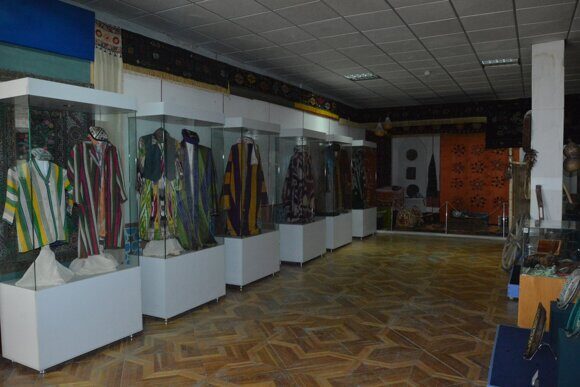
Today, the museum has 5 (history, nature, art, scientific and educational and foundation) departments and 10 (fine arts, metal and ceramic products, special, documents, newspapers and posters, wood products, archeology and numismatics, nature, photonegatives and photographs) depositories. They are headed by 3. Akhmedova (foundation department), K. Rasulov (history department), G. Kenzhaeva (nature department), O. Mukhammadieva (art department) and E. Khaidarova (scientific and educational department).
In addition, there are 7 branches of the regional Museum of local lore of Ferghana in the districts. These are: the museum of Hamza Hakimzod Niyazi in the village of Shakhimardan, the memorial museum of Usman Yusupov in the village of Kaptarkhan in the Ferghana district, the museum of the history of the Uzbek district in Yaypan, the memorial museum of Yuldash Akhunbabayev and the museum of "Literature and Art" in Margilan, the house museum of Ziyavuddin Khazini in Uchkuprik district and the museum of the history of Altyaryk district.
This catalog, entitled "Pearls of the Ferghana Museum", includes more than 500 exhibits of the regional Museum of local Lore of Ferghana. The collections of archaeology, numismatics, ethnography, applied art, sculpture, manuscripts and weapons are mainly presented here. It should be noted with pride that most of the exhibits stored in the Ferghana Museum were presented at international exhibitions. In 1957 and 1957. Exhibitions with the exhibits of this museum were organized in Leningrad (present-day St. Petersburg, Russia), in 1978 in Kiev (Ukraine), in 2000 in Hanover (Germany), in 2003 in London (England). In the capital of our country, Tashkent, from 1980 to 1990, several exhibitions were organized based on the exhibits of the Ferghana Museum.



